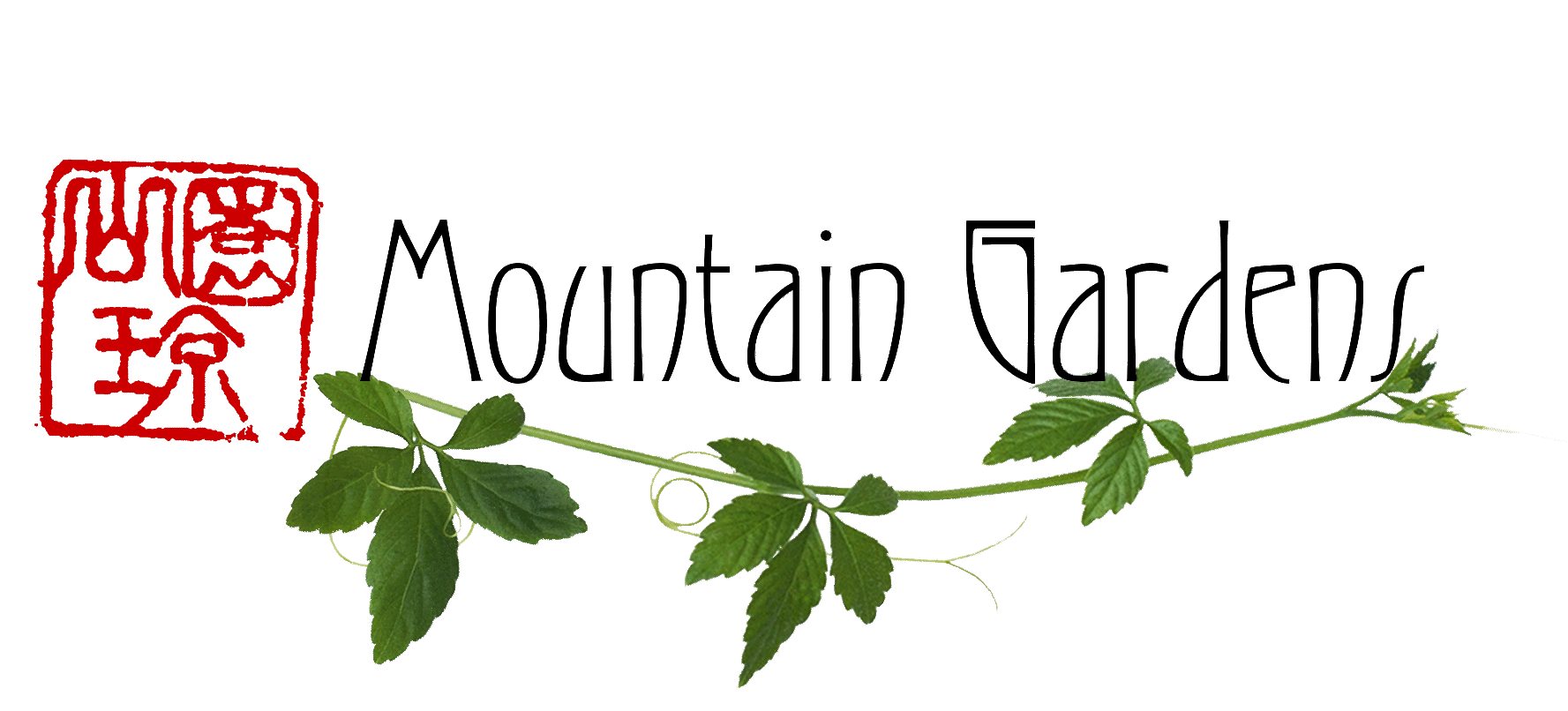Sansai: on beyond ramps
Sansai means, literally, ‘mountain vegetable.’ Mountain vegetable implies wild vegetable., as opposed to cultivated (on the plains). Mountains are high, closer (than plains) to heaven. Mountain vegetables, because they are wild, because they grow closer to heaven, embody more qi(ch’i) (usually translated as ‘energy’ – this is the energy which flows in the acupuncture channels, and is activated by ‘Tai Ch’i’ exercises).
Furthermore, most sansai are the early spring shoots of various perennial herbs and shrubs, so eating them partakes of the vital, bursting-forth energy of spring. And they are delicious. In Japan, the arrival of sansai in urban restaurants and markets is eagerly anticipated. Grocery stores offer commbination packages which might contain, e.g. a bamboo shoot, a few fiddleheads, a bunch of mitsuba, some Hosta shoots and of course kinome, the ‘essence of spring.’
I have found, so far, three lists of plants used as sansai in Japan, and they are included below. The main interest and relevance of these is that almost every one of plants listed occurs or has a closely related species in Eastern N. America (an exception would be Hosta – there are no American Hosta spp. But Hosta is well-established in American gardens, and even if only deer eat them at present, that will be changing soon…)
Of particular interest is the fact that most of these are woodland plants. While our S Appalachian ‘rich woods’ are famous as the source of most of the well-known American medicinal herbs, we rarely think of them as providing food. And while it is true that the amount of food we can gather, particularly from the spring ephemerals and also the tender early shoots of many woodland perennials, is relatively small, it is also true (or so I and many others hold), that it’s ‘the best food you’ll eat all year.’ (Not to mention that it comes right at the time we are most pining for fresh green plant energy.)
We supply ‘mountain vegetables’ to three nearby restaurants, and their chefs want everything we can bring them. So we are not looking for more customers for our sansai; rather, we see our niche as offering seeds and ‘starts’ to folks who’d like to establish these exciting, new (to us) food plants for their own future harvest. This includes anyone who grows vegetables for discriminating chefs.
So, our project is to develop a repertoire of sansai plants for our garden (and yours). Below are the the plants we are currently working with (more to come): we’ll be adding pix and instructions as time permits. Most of these are available either as seeds or bare-root plants or divisions.
We’ll be having a workshop about sansai and spring wildfoods on Friday April 19, 1:30-5:00 pm. Please go to workshops page to register
first priority:
ramps Allium tricoccum
solomon’s seal Polygonatum commutatum
indian cucumber root Medeola virginiana
ostrich fern Matteucia struthiopteris
HostaHosta spp.
mitsuba, honewort Cryptotaenia canadensis
bamboo Phyllostachys spp.
udo Aralia cordata
kinome Zanthoxylum piperitum
woods nettle Laportea canadensis
next ten:
Jap. knotweed Polygonum
Canada lovage Ligusticum canadense
tall bellflower Campanula americana
anise root Osmorrhiza longistlis
aralia / acanthopanax spp.
crinkle root / toothwort Dentaria diphylla
Smilax herbacea
Chinese wolfberry (leafy shoots) Lycium chinense
arrowhead Sagittaria latifolia
Oenanthe javanica
SANSAI PLANTS in Japan:
from website www.shizuokagourmet.com This website has a nice photo of each item.
Allium victorialis ainu negi
thistle azami
akebia chocolate vine (fruit)
Polygonatum odoratum amadokoro
Petasites giant butterbur fukinoto
Glehnia littoralis hamaboufuu
Senecio cannabifolius hangonsou
Lonicera caerulea hascup hasukappu
flying spider monkey tree fern hikagehego
Urtica thunbergiana irakusa
Polgonum Japanese knotweed itadori
Erythronium dogtooth violet katakuri
Hosta fortunei plantain lily kiboushi
Matteucia (?) ostrich fern kogomi (exists as green & red)
Acanthopanax sciadophylloides koshiabura
Lycium Chinese wolfberry kuko
Clerodendron harlequin glory bower peanut butter shrub kusagi
silver vine (fruit) matatabi
Cryptotaenia canadense mitsuba Japanese honewort
Anemone faccida nirinsou
Allium macrostemon nobiru
Synurus pungens oyamabokuchi
Clethra barbinervis ryoubu
Actinidia arguta sarunashi
Japanese parsley seri
Portlaca common purslane suberiyu
bamboo shoots takenoko
Taraxacum dandelion tanpopo
Aralia elata tara no me
Equisetum (arvense horsetail tsukushi
Adenophora triphylla tsuroganeninjin
Arali cordata udo
” ” yamaudo (bundle of blanched shoots)
Hosta montana urui
Pteridium aquilinum warabi
Vitis crimson glory vine (fruit)
wild horseradish yamawasabi
Osmunda japonica zenmai
aiko
akamizu
aomizu
Sansai – ‘wild mountain vegetables’ – “ Sansai convey a strong sense of spring and are a great favorite of vegetarians, often featuring in the menus of shojin ryori (zen buddhist cuisine)… The following is a list of the commonest plants used:
lamb’s quarters Chenopodium album var centrorubrum
asatsuki chive Allium ledebourianum
ashitaba Angelica keiskei
Japanese butterbur, unopened buds Petasites japonicus
chive Allium victorialia var platyphyllum
Japanese knotweed Polygonum cuspidatum
water shield Brasenia schreberi
licorice Glycyrrhiza uralensis
dog’s tooth violet Erythronium japonicum
ostrich fern fiddleheads Matteucia struthiopteris
indian plantain Cacalia delphiniifolia, C. hastata ssp. orientalis
sasa bamboo Sasa kurilensis
red garlic Allium grayi
plantain lily Hosta sieboldiana
saltwort Salsola komarovii
water dropwort Oenanthe javanica
green brier Smilax riparia
angelica tree shoots Aralia elata
field horsetail, fertile shoots Equisetum arvense
acanthopanax Acanthopanax gracilistylus
nettle Elatostema umbellatum v. majus
bracken Pteridium aquilinum v. latiusculum
udo Aralia cordata
aster Aster yomena
wormwood Artemisia princeps
royal fern Osmunda japonica ”
Richard Hosking A Dictionary of Japanese Food (Tuttle, 1995)
The third list is in the Wikipedia article on sansai.
